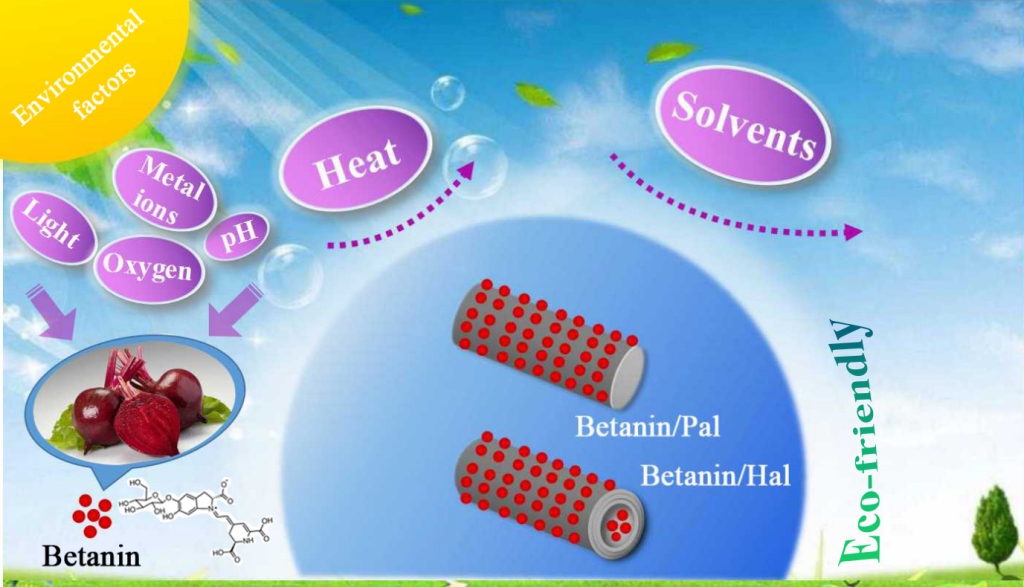Eco-friendly betanin/clay minerals hybrid materials with good stability were synthesized combining natural betanin molecules extracted from beetroot with 2:1 type palygorskite (Pal) and 1:1 type halloysite (Hal), respectively. It was found that the adsorption, grinding and heating treatment played a key role to enhance the interaction between betanin and clay minerals during preparation process, which favored improving the thermal stability and solvent resistance of natural betanin. The L* and a* values of the betanin/Pal and betanin/Hal hybrid materials were 64.94 and 14.96, 62.55 and 15.48, respectively, indicating that betanin/Hal exhibited the better color performance. The structural characterizations confirmed that betanin was mainly adsorbed on the outer surface of Pal or Hal through hydrogen-bond interaction, and part of them also were entered into the inner surface of Hal via electrostatic interaction. Therefore, Hal preferred to improve the color properties, heating stability and solvent resistance of natural betanin due to its structural features compared with Pal.

